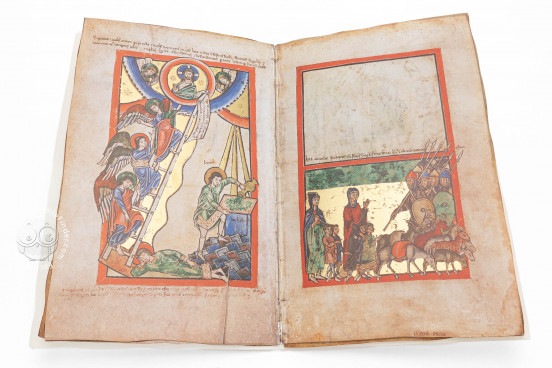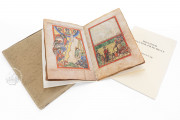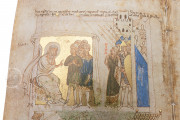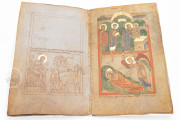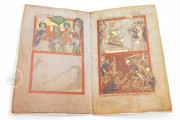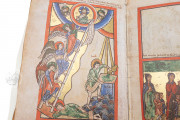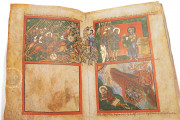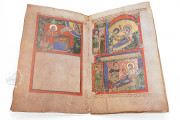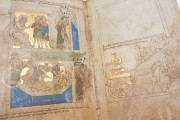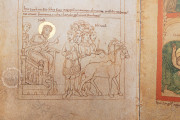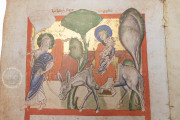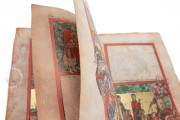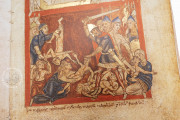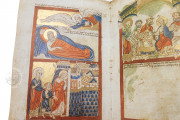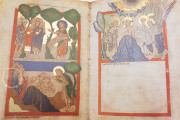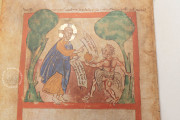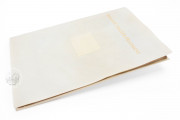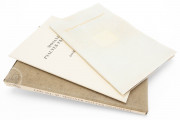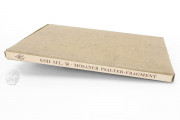A highlight of Romanesque illumination, the ten leaves known as the Mosan Psalter Fragment comprise a series of twenty miniatures with scenes deriving from the Christian Old and New Testaments and stylistically localizable to the Meuse valley. Rich in iconographic rarities and compositional anomalies, it remains one of medieval art history's enduring enigmas.
All but one of the miniatures are organized in two registers. Only the image of Jacob's dream of angels ascending and descending a ladder reaching to heaven occupies a full page (fol. 4v).
Inscriptions in the Manner of Tituli
Inscriptions above, below, and in the miniatures describe the scenes, identify persons and objects, and report direct discourse. They are written in Gothic Hybrida script.
A Picture Cycle for a Book of Psalms?
The arrangement of the miniatures has led some scholars to posit that the leaves were originally painted to be part of the prefatory picture cycle for a psalter, the favored sort of Christian personal devotional book of the period. Several of the scenes are unfinished, and two drawings are only partially gilt. The miniatures nonetheless flaunt bold color and very generous use of gold.
Or a Model Book?
The miniatures are not homogenous in technique and style, and several artists must have been involved. The unfinished state has led some to argue that the Mosan Psalter Fragment was created to serve as a book of models intended for general use by goldsmiths, enamellers, and miniature and fresco painters.
Glimpses into the Painting Process
Regardless of the creators' intent, the manuscript is invaluable for its insight into the production process of Romanesque illuminated manuscripts. With some miniatures unfinished and partially gilded, students of medieval book production can see that gold was normally applied after the drawings were executed, but before the paint was applied. The fragment may therefore reveal a collaboration among several artists, each responsible for only one stage of the work.
Transmission across Time and Medium
The Mosan Psalter Fragment boasts innovative compositions, some of which may have been inspired by paintings of the early Christian period or by works in other media. The miniature of John the Baptist preaching to and baptizing Neophytes betrays a familiarity with an early twelfth-century sculpted baptismal font by Rainer of Huy. This elegant borrowing is an apt illustration of the flexible and frequent use of a variety of models by Romanesque painters.
We have 1 facsimile edition of the manuscript "Mosan Psalter Fragment": Das Mosaner Psalter-Fragment facsimile edition, published by Akademische Druck- u. Verlagsanstalt (ADEVA), 1974
Request Info / Price
